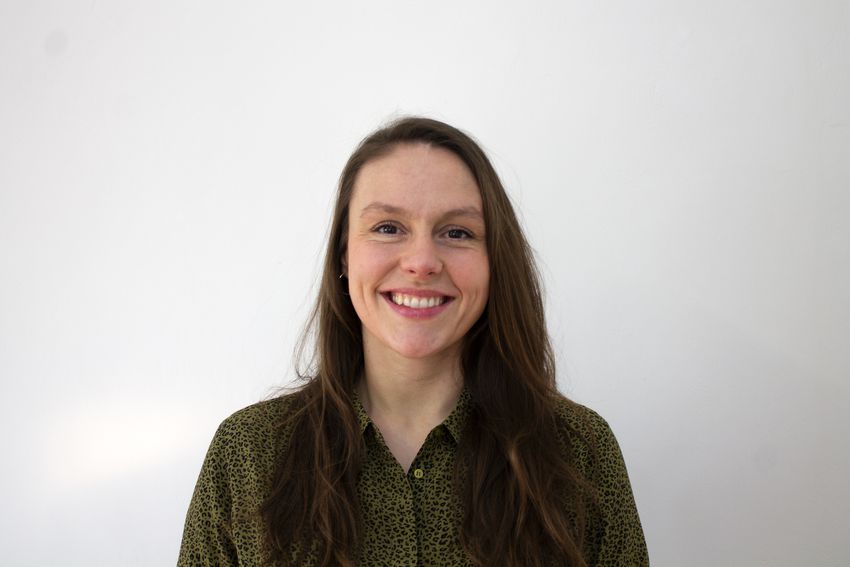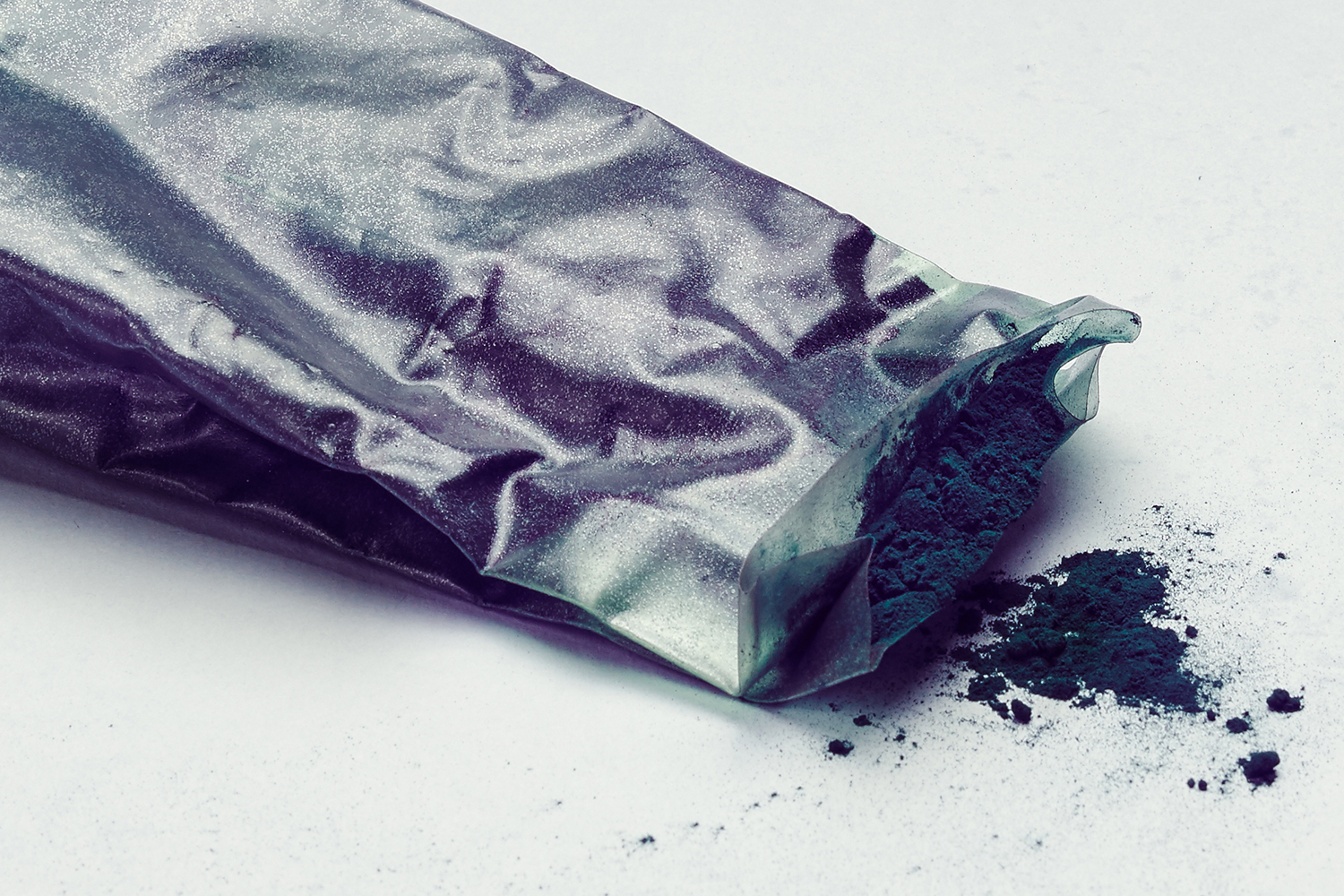Sustainability
Wibke Behrens: “Art is not there to present solutions”
Ever since Joseph Beuys introduced the sustainability discourse to art …

They want to create a packaging material from algae that is compostable and protects as well as plastic packaging. They, that's Annekathrin Grüneberg, Juni Sun Neyenhuys and Katharina Kremer - together they form the mujō team, which in Japanese means the impermanence of everything that exists. How promising is their development?
CCB Magazine: Hello Annekathrin, you are an industrial engineer in chemical and process engineering and founded mujō together with designers Juni Sun Neyenhuys and Malu Lücking. Your goal is to replace plastic products with algae-based, biodegradable products. More specifically, you produce packaging material from seaweed. Why algae, why seaweed?
Annekathrin Grüneberg: Our aim is to develop a packaging material that protects products as well as plastic packaging. At the same time, this material should be compostable. To achieve this, it is helpful if the starting material is also compostable and, ideally, is based on a raw material that is easy to regrow. Brown algae are an exciting source of raw materials. The advantage of algae is not only that they grow naturally in the sea, but also that they require no water, no arable land and almost no fertilizer. They grow around twenty times faster than trees and bind CO2 like them. Moreover they can easily be cultivated offshore or harvested from the sea.
CCB Magazine:How difficult is it to get your source material?
Annekathrin Grüneberg:We do not harvest the algae ourselves and use alginate, a carbohydrate extracted from brown algae, as the basis for our packaging material. So far, we have bought this alginate from European suppliers. One of these suppliers is on the Atlantic coast in Brittany, for example. But we have not yet decided where we will buy it in future and which alginate we will use exactly.
CCB Magazine:Who else is the alginate sold to or for what purpose?
Annekathrin Grüneberg:Algae extract is used, for example, in the pharmaceutical industry as a wound dressing or in medical technology for dental impressions, paper is coated with it and, of course, it is used in many ways in the food industry as a thickening agent.
Our aim is to develop a packaging material that protects products as well as plastic packaging. We want to do this with algae. The advantage of this is that they grow naturally in the sea and don't need water, arable land or almost any fertilizer
CCB Magazine:What do you make with the alginate? Are you still in the development phase or do you already have a finished product?
Annekathrin Grüneberg:We're still in the development phase, but have already made very good progress. We plan to produce a transparent, flexible film that can then be further processed into packaging. For example, our film could be used as a window in cardboard packaging or as a flowpack. That depends on the properties of our material in the end. As I said, we are still experimenting with this. Non-food items can definitely be packaged with it without any problems, but it's more difficult with food. The material is biodegradable, which means that it depends very much on how it is stored. It must always be stored in a dry place. Otherwise there is a risk that it will decompose. That is the difference to petroleum-based plastics.
CCB Magazine:Perhaps you could explain your production process in more detail.
Annekathrin Grüneberg:I can't go into details now, that's a trade secret. But you can also try it out yourself at home. You take the alginate, mix it with glycerine and water, pour everything onto a plate, let it dry and you have a transparent film. There's no magic involved. Just kitchen chemistry!



CCB Magazine:Is there a story behind mujō? Who came up with the idea?
Annekathrin Grüneberg:Juni was the initiator of the whole thing. She studied at the Weißensee School of Art and studied brown algae, from which she wanted to develop a yarn. She reached her scientific limits and looked for help at the TU Berlin. That was in 2018, when a professor put her in touch with me. Together with Juni and Malu, we spent several months researching algae in the context of my master's thesis and her university project, and the idea of producing a packaging material from alginate emerged from this. We later founded an OHG, a general partnership.
CCB Magazine:What happens to your film when it is worn out? How and where is it disposed of?
Annekathrin Grüneberg:Everything in our packaging material is biodegradable because we do not chemically alter the raw materials. So if you have a home compost heap, you can safely dispose of our material there. In our ideal world, you could simply throw our algae film in the organic waste garbage can and the waste would be taken to the composting plant where it would decompose into compost, but unfortunately this is not possible. The fact is that the DIN standards used to determine compostability rarely match the actual composting conditions in composting plants. It is likely, for example, that the length of time biowaste spends in such a plant is much shorter in reality than tested in the compostability test. As a result, film classified as compostable will not be completely degraded in the end. In addition, composting plant operators have to deal with very contaminated biowaste that is interspersed with plastic film, among other things. The unrotted algae films mixed with all the other biowaste can no longer be distinguished from plastic film, are sorted out together and have to be disposed of at the expense of the composting plant operators. In most cases, the leftovers end up in the waste incineration plant. Until these problems are solved, it is completely understandable that the BSR prohibits the disposal of bioplastics in its organic waste garbage cans.
If you have a home compost, you can safely dispose of our material there. In our dream world, you can also throw our algae film into the organic waste garbage can, but unfortunately this is not yet possible. The disposal of bioplastics in organic waste garbage cans is currently prohibited
CCB Magazine:So do we need a new disposal infrastructure for these new materials?
Annekathrin Grüneberg:Possibly yes. There are still many unanswered questions. There are many more biodegradable materials that are currently being developed, we are not the only ones and are in contact with others who are facing similar problems and regularly exchange ideas.
CCB Magazine:Does this mean that if the algae film is not allowed in the organic waste, it goes in the residual waste and is incinerated?
Annekathrin Grüneberg:Exactly. It could also end up in the paper waste, but there it would also be separated from the paper fibers and end up in the waste incineration plant. Paper manufacturers have no interest in the algae material because they want to recover waste paper from the discarded paper. This is not possible with algae. But paper waste could be considered for legal disposal. If you don't have a home compost, you can save yourself all the disposal detours and throw the material straight into the black garbage can, which is currently the second best disposal scenario, but not our goal.
CCB Magazine:How do you finance your project?
Annekathrin Grüneberg:We applied for the Berlin start-up grant through DesignFarm and got it. That was just before the coronavirus pandemic, so it was perfect timing. We were then advised to pitch the project for further funding and we then took part in an ideas competition organized by Philip Morris and were surprisingly selected as the winner out of 1,600 applicants. The prize money was 400,000 euros! There were several rounds and we had to keep improving our idea. Together with a research institute, the Papiertechnische Stiftung in Heidenau, we therefore spent several months researching our concept - which paid off in the end. We also submitted a research application to the Federal Ministry of Education and Research and received funding for two and a half years.
CCB Magazine:And the prize money from Philip Morris didn't present you with a moral dilemma? After all, the company belongs to an industry that has not exactly covered itself in glory in the past.
Annekathrin Grüneberg:We have discussed this. If we accept the money, then Philip Morris is part of our history. But there were no conditions from the company, so we didn't have to do anything we didn't want to do.
CCB Magazine:Finally: What is the big vision for mujō?
Annekathrin Grüneberg:Our vision is for our materials to be accessible to all consumers and for them to be able to compost them. There is still a long way to go until then.
Category: Innovation & Vision
Also a good read
Subscribe to our monthly newsletter!